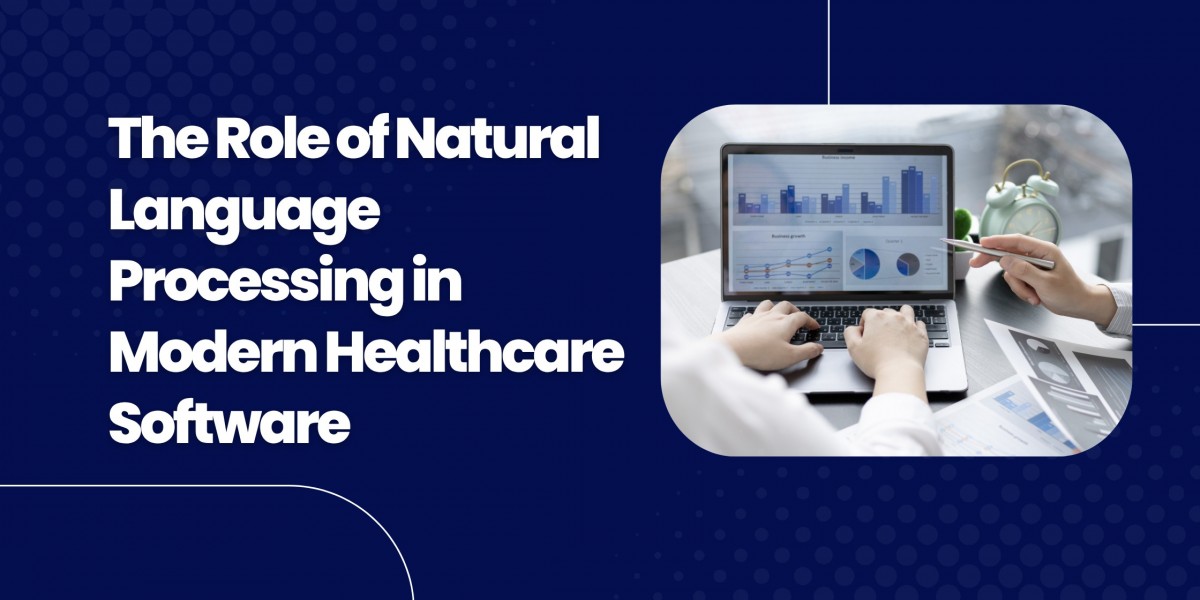Natural Language Processing—NLP for short—is quietly becoming one of the most transformative technologies in healthcare software today. Yet, it’s often misunderstood or underappreciated outside of technical circles. If you think NLP is just about chatbots or voice assistants, think again. It’s far more powerful, nuanced, and essential than that.
In the fast-evolving landscape of healthcare software, NLP is not merely an add-on feature. It’s the foundation for making sense of the vast ocean of unstructured clinical data, patient conversations, medical literature, and administrative records. And the impact? It’s changing how doctors diagnose, how patients engage, and how entire health systems operate.
Let’s pull back the curtain and examine the real role NLP plays in modern healthcare software—and why it matters to everyone, whether you’re a developer, healthcare professional, or patient.
What Is Natural Language Processing, Really?
Before diving into the specifics, it’s worth clarifying what NLP entails in this context. Natural Language Processing is a branch of artificial intelligence focused on enabling computers to understand, interpret, and generate human language. Unlike traditional programming that relies on rigid inputs, NLP works with messy, ambiguous, and complex language data — just like we humans do every day.
In healthcare, this means NLP tools can analyze clinical notes written by physicians, transcribe doctor-patient conversations, extract meaningful information from medical journals, and even interact with users in natural, conversational language.
The challenge lies in healthcare’s linguistic complexity: jargon, acronyms, varied phrasing, and sometimes incomplete or contradictory data. NLP technologies have to navigate this labyrinth to deliver precise and actionable insights, which they increasingly do with impressive accuracy.
How NLP is Revolutionizing Medical Records and Documentation
One of the most labor-intensive aspects of healthcare is documentation. Physicians spend hours writing notes, updating patient histories, and filling out forms. It’s tedious and prone to human error. Enter NLP-powered documentation tools.
Modern healthcare software uses NLP to automatically transcribe and interpret spoken or written inputs, turning them into structured electronic health records (EHR). This is not simply voice-to-text; it’s about extracting context, symptoms, diagnoses, and treatment plans.
For example, an NLP system can identify that a phrase like “patient denies chest pain but reports occasional shortness of breath” contains both a negative and a positive symptom, classifying these correctly in the record. This precision reduces the risk of misdiagnosis or overlooked conditions.
Beyond easing documentation burdens, NLP improves data quality, enabling better clinical decision-making and research by structuring unstructured data—something manual entry often fails to achieve.
Enhancing Patient Interaction Through Conversational AI
If you’ve ever used a symptom checker or health chatbot, you’ve met NLP in action. But today’s applications go well beyond scripted Q&A.
Conversational AI powered by NLP can understand natural language nuances, detect sentiment, and tailor responses to individual patient needs. This means the interaction feels less like talking to a robot and more like chatting with a knowledgeable assistant.
Why is this important? Because healthcare is deeply personal. Patients want empathy, clarity, and reassurance. An NLP-driven virtual assistant can triage symptoms, remind patients about medication schedules, provide mental health support, and even educate users about their conditions—all while learning and adapting over time.
During the COVID-19 pandemic, for instance, many healthcare providers deployed NLP chatbots to handle routine inquiries, freeing up human resources for critical tasks. This shift has now set a new expectation for digital health engagement.
NLP’s Role in Clinical Decision Support
One of the most exciting applications of NLP in healthcare software is in Clinical Decision Support Systems (CDSS). These systems provide physicians with evidence-based recommendations by analyzing patient data alongside the latest medical research.
Imagine a tool that reads a patient’s symptoms and history and then scans thousands of relevant articles, clinical trials, and case studies to suggest diagnostic possibilities or treatment options. This isn’t science fiction—it’s increasingly common.
NLP enables these systems to understand complex language in medical literature and clinical notes, matching it to patient specifics. This accelerates diagnosis, reduces errors, and supports personalized medicine.
Moreover, NLP can flag potential drug interactions or allergies that might otherwise be missed in busy clinical environments, adding an essential safety layer.
Challenges and Ethical Considerations in Healthcare NLP
While NLP offers tremendous potential, it’s not without challenges.
Healthcare data is sensitive and regulated. Ensuring patient privacy while using NLP models that often require large datasets for training is a tightrope walk. Compliance with laws like HIPAA in the U.S. or GDPR in Europe is mandatory, and NLP software must incorporate robust security and anonymization techniques.
Accuracy is another hurdle. Medical language is highly specialized, and errors in interpretation can lead to serious consequences. Developers must rigorously validate NLP models with domain experts and constantly update them to reflect new medical knowledge and language usage.
Bias is a further concern. If training data is skewed toward certain populations, the NLP system might underperform or provide less reliable outputs for underrepresented groups. Addressing this requires conscious dataset design and continual monitoring.
Lastly, transparency matters. Healthcare providers and patients need to understand how an NLP system arrives at conclusions, especially when it influences clinical decisions. Black-box models without explainability risk losing trust and acceptance.
Global Impact: NLP Transforming Healthcare Across Borders
NLP’s influence is not confined to any one country or healthcare system. Across the globe, it’s leveling the playing field in healthcare delivery.
In regions with doctor shortages, NLP-powered telemedicine platforms enable better remote diagnostics and patient support. Multilingual NLP systems break down language barriers, facilitating communication between patients and providers speaking different languages.
For public health agencies, NLP can analyze social media, news, and medical reports in real time to detect outbreaks or health trends, enabling faster responses.
The scalability of NLP software means innovations developed in one country can be adapted and deployed elsewhere, accelerating healthcare improvements worldwide.
What the Future Holds: NLP and Healthcare Software Innovation
As NLP technology matures, the horizon is full of promise.
Expect deeper integration of NLP with other AI disciplines—computer vision, predictive analytics, and robotics—to create holistic healthcare solutions. For example, NLP combined with image recognition can link radiology reports directly with scan images, offering richer insights.
Personalized healthcare will advance as NLP models understand individual patient narratives over time, detecting subtle health changes and recommending timely interventions.
Advances in unsupervised learning and transfer learning will help NLP systems keep pace with rapidly evolving medical knowledge without exhaustive retraining.
Importantly, greater collaboration between technologists, clinicians, and ethicists will drive development that is both cutting-edge and patient-centered.
Conclusion: NLP is Not Just a Feature—It’s a Healthcare Game-Changer
Natural Language Processing is no longer a futuristic concept relegated to tech labs. It’s a practical, proven, and essential component of modern healthcare software.
From transforming clinical documentation and enabling conversational patient care to supporting complex clinical decisions and expanding access globally, NLP’s role is profound and growing.
The technology comes with challenges—ethical, technical, and regulatory—but these are being met head-on by dedicated experts, ensuring NLP’s promise is realized safely and effectively.
For healthcare providers and innovators looking to stay ahead, embracing NLP isn’t optional—it’s imperative.
If you’re seeking to develop intelligent healthcare solutions that leverage the power of natural language processing, explore our custom healthcare software development services to build applications that make a meaningful difference.































